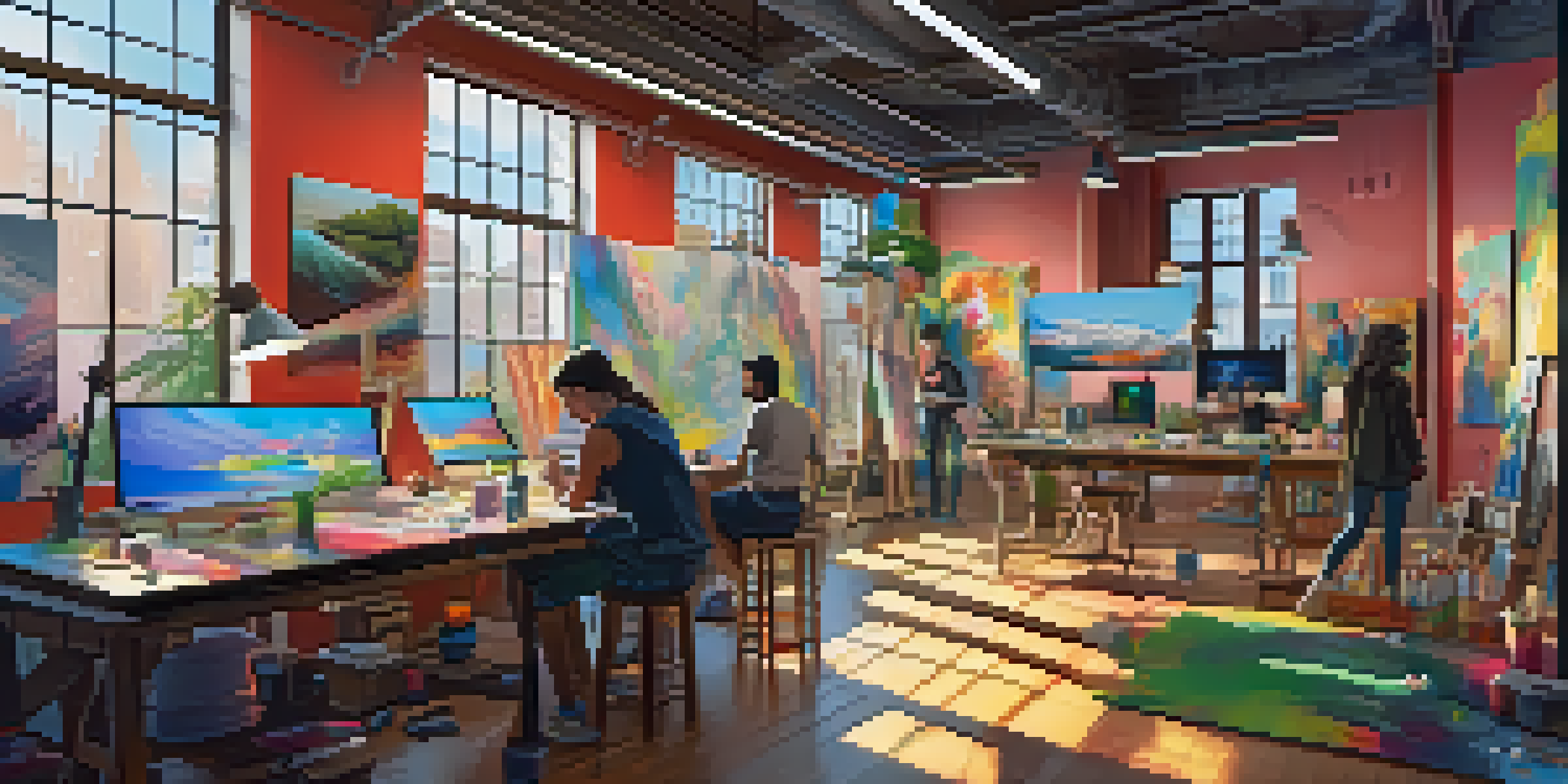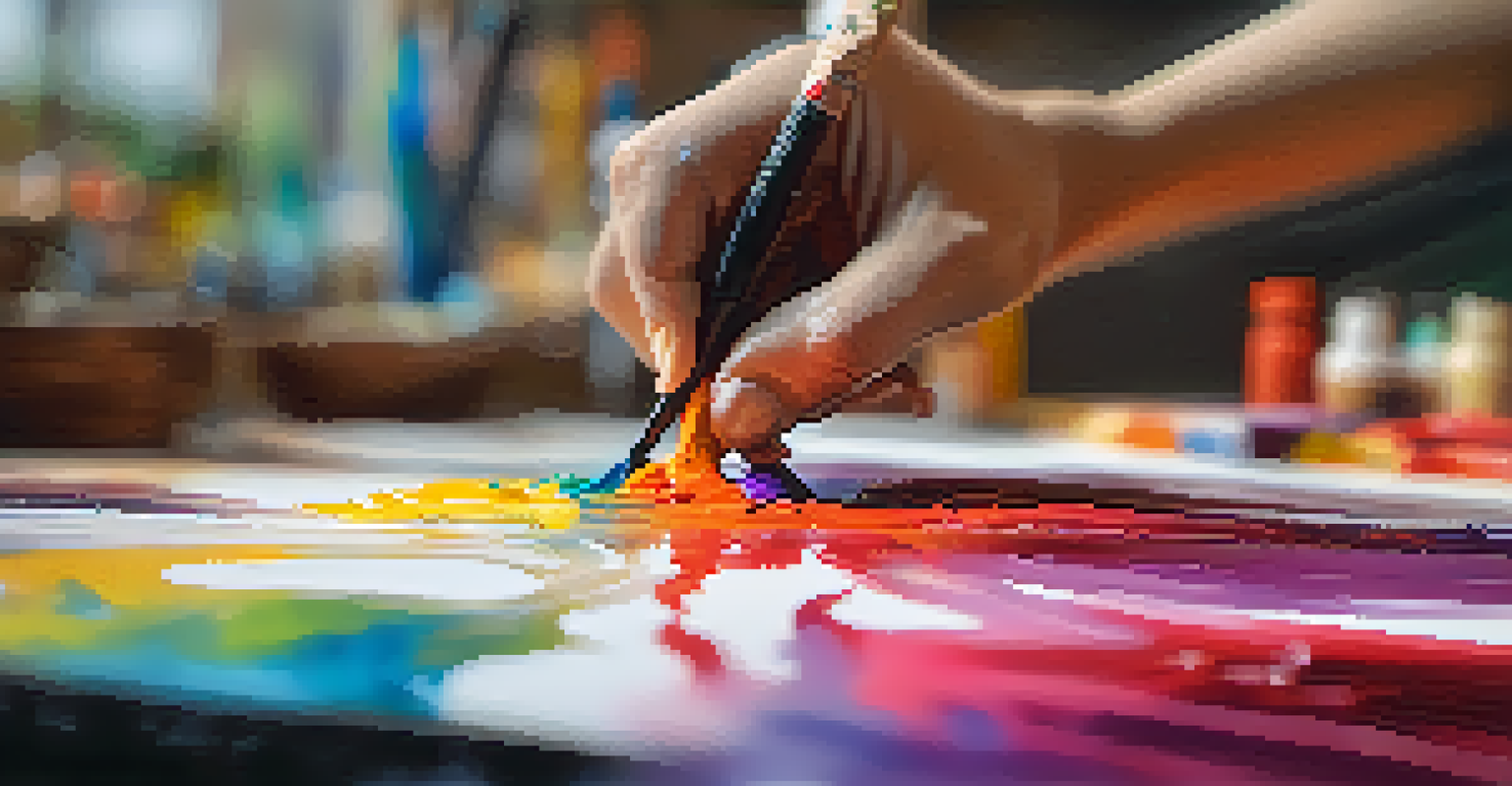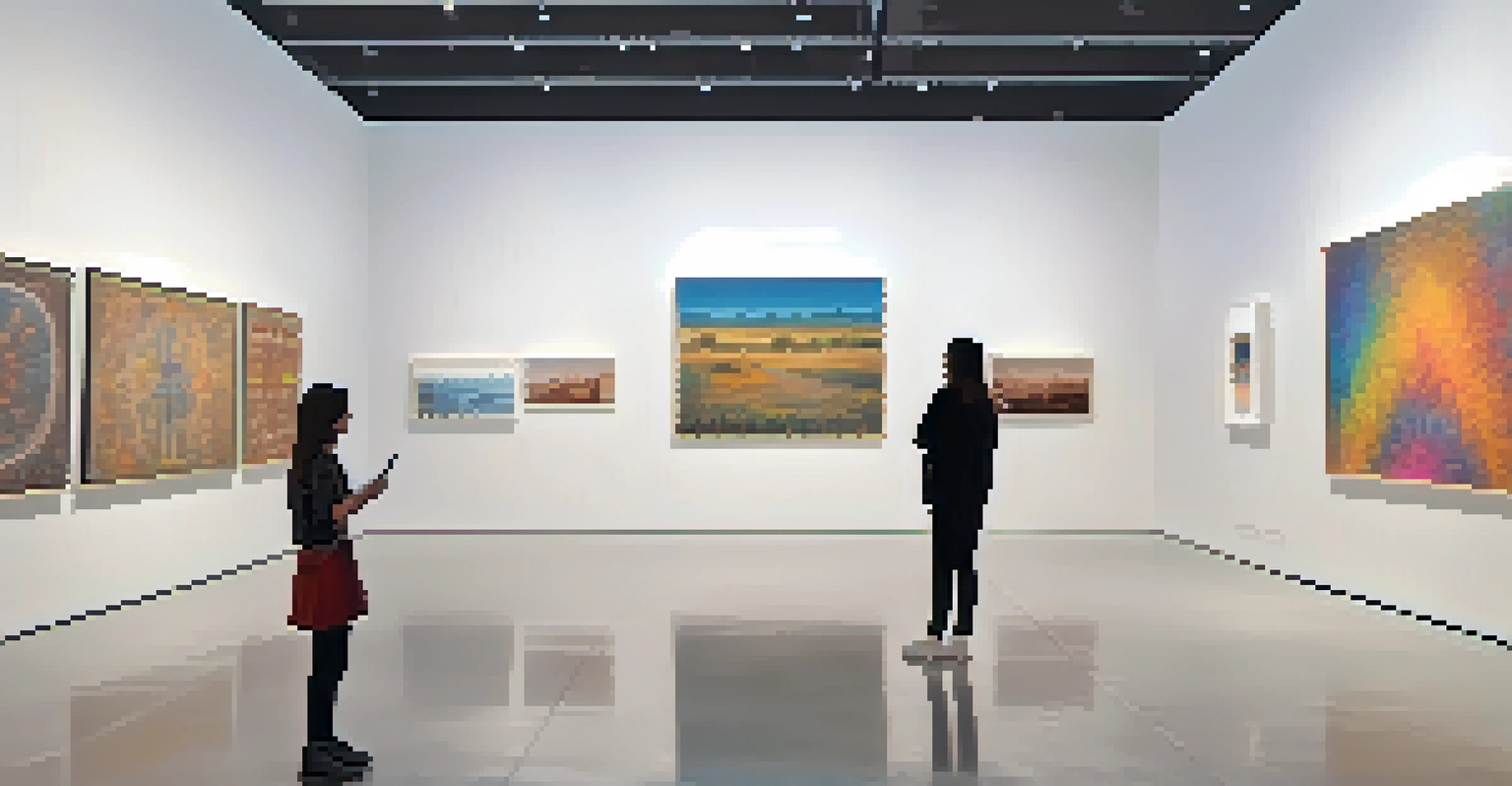How Social Media Platforms Influence Modern Art Creation

The Rise of Digital Art Through Social Media
In recent years, social media has opened up a whole new world for artists, allowing them to share their work instantly with a global audience. Platforms like Instagram and TikTok have become virtual galleries where creators showcase their art, often blurring the lines between traditional and digital mediums. This accessibility has led to an explosion of diverse artistic expressions, giving rise to styles and movements that might have otherwise remained unnoticed.
Art is not what you see, but what you make others see.
Consider the way an artist might post a time-lapse video of their painting process on TikTok. This not only engages viewers but also invites them into the creative journey, fostering a sense of community and connection. The instant feedback from followers can also serve as a powerful motivator, encouraging artists to explore new techniques or ideas they might have hesitated to try before.
Moreover, the viral nature of social media means that a single post can reach thousands, if not millions, of people within hours. This phenomenon has led to the rise of 'internet art'—pieces designed specifically for viral sharing, which often incorporate humor, relatability, or trending topics. As a result, social media has not only changed how art is created but also how it is perceived and consumed.
Community Building Among Artists
One of the most significant impacts of social media on modern art is the ability for artists to build communities and connect with each other. Hashtags like #ArtCommunity or #ArtistSupportPledge encourage collaboration, feedback, and even financial support among creatives. These networks often extend beyond geographical boundaries, allowing artists from different cultures to share their unique perspectives and techniques.

For example, an artist in Brazil can easily collaborate with another in Japan, sharing ideas and inspiration through direct messages and live-streamed sessions. This cross-pollination of styles and approaches enriches the art created, as diverse influences come together in exciting ways. It’s a beautiful reminder of how technology can bridge gaps and foster creativity across the globe.
Social Media Empowers Artists
Platforms like Instagram and TikTok allow artists to share their work globally, fostering community and encouraging experimentation.
Additionally, many artists use social media to host virtual exhibitions, allowing for broader access to their work. This democratization of art spaces means that viewers who might not have access to galleries or museums can engage with contemporary art directly. The result is a more inclusive art world, where voices that were once marginalized can now flourish.
Influence of Trends and Challenges
Social media is a double-edged sword when it comes to trends in modern art. On one hand, platforms can propel certain styles into the spotlight, encouraging artists to experiment with trending themes or aesthetics. On the other hand, the pressure to conform to these trends can stifle individual creativity, leading some artists to feel trapped by the expectations of their online audience.
The great thing about social media is that you can connect with people from all over the world and share your art with them instantly.
For instance, the popularity of minimalist designs or pastel color palettes on Instagram can influence an artist’s choices, sometimes leading them to prioritize what will get likes over what feels authentic. While it’s natural for creators to seek validation, it’s crucial for artists to stay true to their unique voice and vision, even in the face of overwhelming trends.
Moreover, challenges like the #Inktober drawing challenge or the #30DayArtChallenge encourage artists to push their boundaries and explore new concepts. These initiatives not only foster creativity but also provide a structured way to engage with fellow artists and audiences. However, finding balance is key—participating in trends should inspire, not dictate, an artist's journey.
Engaging with Art Collectors and Buyers
Social media has revolutionized how artists connect with collectors and buyers, making it easier than ever to sell artwork directly. Platforms like Instagram have become crucial marketing tools where artists can showcase their portfolios while collectors can discover new talent. This direct line of communication allows for more authentic relationships between creators and their patrons.
Take the example of an artist who shares behind-the-scenes glimpses of their work, along with stories that resonate emotionally with potential buyers. This not only humanizes the artist but also adds value to the artwork, as collectors feel a deeper connection to both the piece and its creator. It’s a win-win situation that benefits both parties immensely.
Diversity in Artistic Voices
Social media amplifies underrepresented artists, enabling diverse stories and perspectives to flourish in the art world.
Furthermore, social media marketplaces are becoming increasingly popular, allowing artists to sell prints, original pieces, and even merchandise directly to their audience. This shift eliminates the need for traditional galleries, which can often take a significant cut of the profits. As a result, artists can maintain more control over their work and its pricing, fostering a more sustainable art practice.
Diversity and Representation in Art
Social media has played a pivotal role in amplifying diverse voices within the art world, allowing underrepresented artists to share their stories and perspectives. This platform democratizes art, enabling creators from various backgrounds to showcase their work without traditional gatekeeping. As a result, audiences are exposed to a richer tapestry of cultures and ideas.
For instance, movements like #BlackCreatorsMatter and #IndigenousArtists have gained momentum on platforms like Instagram, providing visibility to artists who may have previously been overlooked. This increased representation not only enriches the art community but also encourages dialogue around important social issues, fostering a deeper understanding among audiences.
Moreover, social media's global reach means that art can now reflect a multitude of experiences and viewpoints. Artists are inspiring each other across borders, leading to collaborations that celebrate diversity. This collective effort makes the art world not just more inclusive, but also more vibrant and dynamic.
The Role of Algorithms in Art Visibility
While social media is a fantastic platform for artists, it's important to acknowledge the role algorithms play in determining what content gets seen. These algorithms can sometimes favor certain types of posts over others, making it challenging for artists to maintain visibility. Understanding how these algorithms work can empower artists to strategize their content effectively to reach a wider audience.
For example, consistent posting and engaging with followers can help boost an artist's visibility in algorithm-driven feeds. This means that artists need to be proactive—sharing not just finished works, but also engaging content like process videos, personal stories, and even art challenges. This approach can help maintain audience interest and foster a loyal following.
Algorithms Shape Art Visibility
Understanding social media algorithms helps artists strategize their content for better visibility and audience engagement.
However, it’s essential for artists to remember that while the algorithm may dictate visibility, genuine connections with their audience are invaluable. Authentic engagement can lead to organic shares and word-of-mouth promotion, transcending the limitations of algorithms. Ultimately, artists should focus on creating meaningful content that resonates with their followers.
Future Trends in Art and Social Media
As technology continues to evolve, so too will the relationship between social media and modern art creation. Emerging platforms and tools, such as virtual reality (VR) and augmented reality (AR), are poised to revolutionize how artists create and share their work. Imagine a future where viewers can experience art in immersive environments, right from their homes, thanks to social media integration.
Moreover, the rise of decentralized platforms may shift power dynamics in the art world, allowing artists to curate their own spaces free from the constraints of traditional social media. This could lead to even greater diversity and representation, as artists take charge of their narratives and build communities based on shared values and interests.

Ultimately, the future of art and social media is bright, filled with possibilities for innovation and creative exploration. As artists continue to embrace these platforms, they will shape a new era of art that is more inclusive, dynamic, and interactive than ever before.